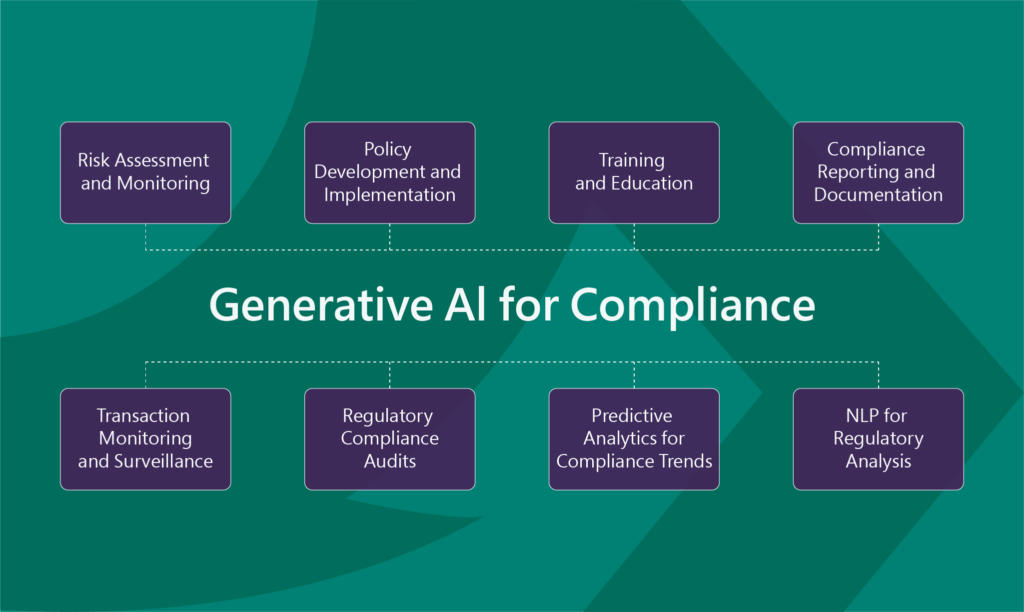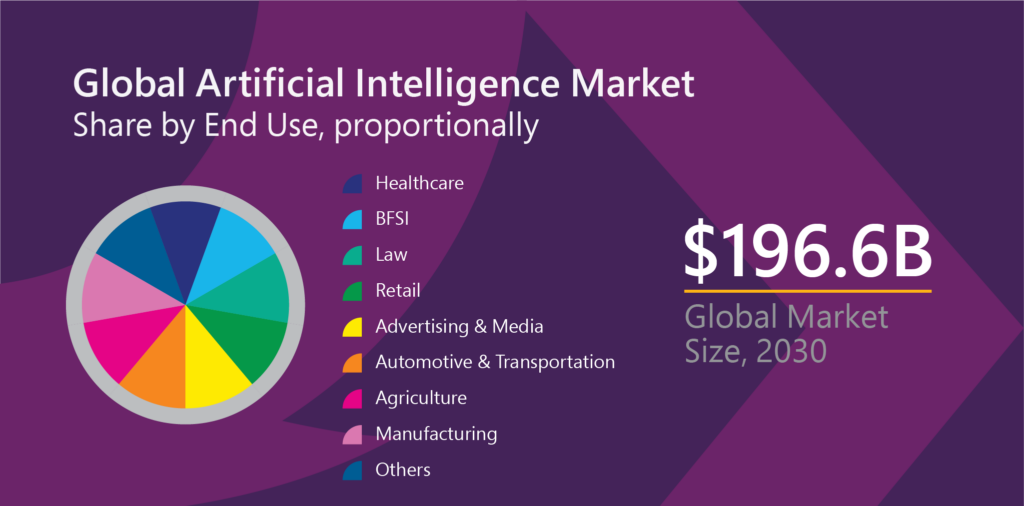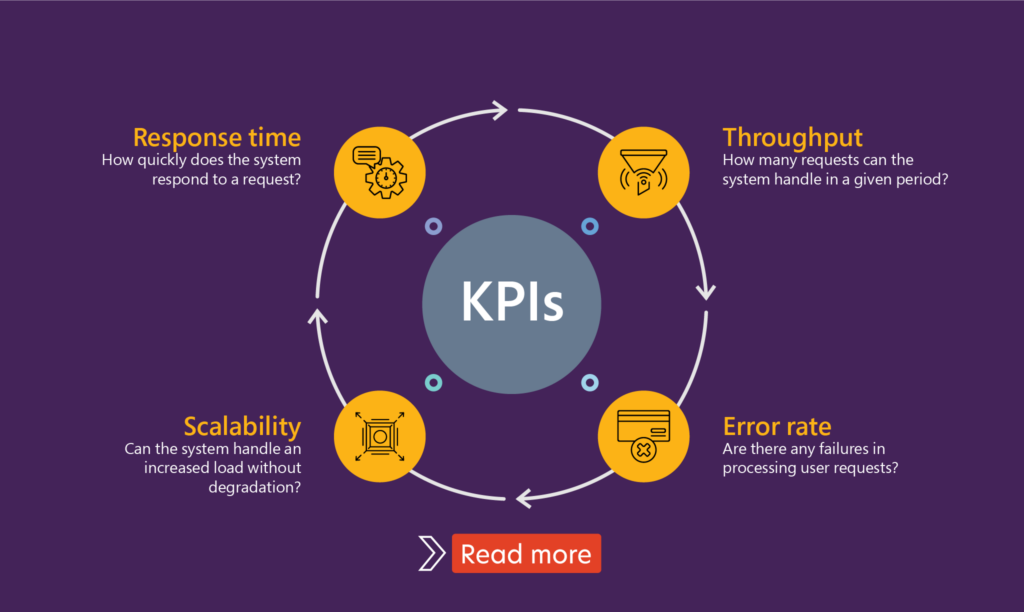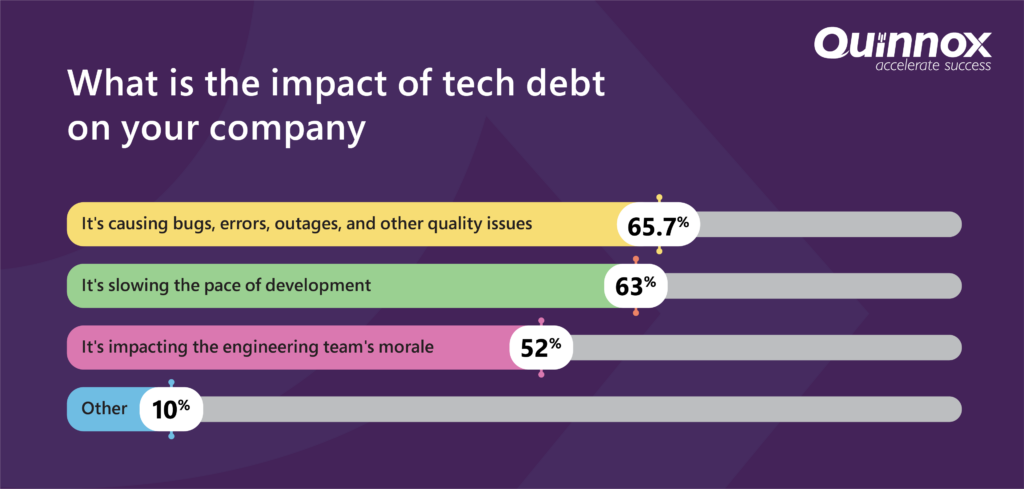Accelerate IT operations with AI-driven Automation
Automation in IT operations enable agility, resilience, and operational excellence, paving the way for organizations to adapt swiftly to changing environments, deliver superior services, and achieve sustainable success in today's dynamic digital landscape.
Driving Innovation with Next-gen Application Management
Next-generation application management fueled by AIOps is revolutionizing how organizations monitor performance, modernize applications, and manage the entire application lifecycle.
AI-powered Analytics: Transforming Data into Actionable Insights
AIOps and analytics foster a culture of continuous improvement by providing organizations with actionable intelligence to optimize workflows, enhance service quality, and align IT operations with business goals.
As businesses increasingly adopt AI technologies, they find themselves grappling with evolving regulations that attempt to keep pace with this rapid innovation. Whether it’s financial services, healthcare, or manufacturing, organizations are struggling to navigate the maze of compliance requirements that AI introduces, such as data privacy laws, ethical considerations, and transparency mandates. The complexity of AI systems themselves adds another layer of uncertainty, as traditional regulatory approaches often fail to address the nuances of machine learning models, automated decision-making, and data governance.
However, the solution to these challenges lies not in resisting the rise of AI but in leveraging the very technology that causes disruption to simplify and streamline regulatory change management. AI can be a powerful ally in monitoring regulatory developments, analyzing vast amounts of regulatory data, and automating compliance processes. For example, AI-driven tools can track regulatory updates in real-time, provide predictive insights on potential regulatory shifts, and help businesses adapt quickly to new requirements.
A recent survey found that 48% of M&A professionals are now using AI in their due diligence processes, a substantial increase from just 20% in 2018, highlighting the growing recognition of AI’s potential to transform M&A practices.

In today’s rapidly evolving regulatory landscape, organizations face the challenge of staying compliant while also ensuring operational efficiency. Artificial Intelligence (AI) is redefining the way businesses manage regulatory changes, providing advanced tools for real-time monitoring, intelligent data extraction, and predictive analysis.
This blog explores the transformative impact of AI in regulatory change management across various sectors, highlighting its applications, key techniques, and the benefits it offers.
AI Applications in Different Industries

Source: Grandviewresearch
According to Grand View Research, the global artificial intelligence market is projected to reach $196 billion by 2030, growing at a compound annual growth rate (CAGR) of 36.6%. The ongoing research and innovation by leading tech companies are accelerating the adoption of advanced technologies across various industries, including automotive, healthcare, retail, finance, and manufacturing.
AI’s adaptability across sectors underscores its pivotal role in compliance management. Here’s how different industries leverage AI to optimize their regulatory change management processes:
1. Financial Services
Real-Time Regulatory Monitoring: Financial institutions face frequent regulatory changes. AI automates the monitoring of updates from regulatory bodies, prioritizing relevant changes to avoid costly non-compliance.
Example: AI systems can flag new anti-money laundering (AML) regulations, allowing banks to adjust policies proactively.
2. Pharmaceuticals and Healthcare
Automated Compliance Review: Healthcare and pharmaceutical companies must adhere to rigorous standards. AI rapidly extracts essential information from regulatory documents, facilitating faster adaptation to new rules.
Example: AI identifies updates in FDA guidelines that affect drug safety protocols, allowing pharma companies to ensure compliance more efficiently.
3. Manufacturing
Predictive Compliance Management: Manufacturing companies are subject to numerous safety and environmental regulations. AI models predict potential compliance issues based on historical data, helping companies act proactively.
Example: AI flags factories or processes that may need updates to comply with new environmental regulations.
4. Telecommunications
Dynamic Risk Assessment: In telecom, data privacy regulations (like GDPR) are crucial. AI assesses the impact of privacy regulations on customer data handling practices, ensuring compliance without compromising service.
Example: AI helps telecom providers audit data storage practices to align with GDPR, ensuring customer privacy and regulatory adherence.
5. Retail
Automated Policy and Document Updates: Retailers must adapt to consumer protection and employee rights regulations. AI updates internal policies based on regulatory changes, keeping customer interactions and employee practices compliant.
Example: AI generates new training material for customer service teams when consumer rights regulations are updated, ensuring compliance with minimal manual effort.
6. Energy and Utilities
Sustainability Compliance: AI assists energy companies in meeting environmental regulations by tracking relevant changes and suggesting compliance strategies, helping align operations with sustainability goals.
Example: AI provides energy companies with insights on adhering to carbon emission targets, ensuring environmental compliance.
7. Insurance
Claims and Compliance Integration: In insurance, AI reviews claims processing for compliance with regulatory standards, ensuring adherence in policy management and customer interactions.
Example: AI updates eligibility criteria in claims processing systems based on new compliance requirements, reducing the risk of non-compliant claims approvals.
Key AI Techniques in Regulatory Change Management
Traditional methods of monitoring and implementing regulatory changes can be time-consuming, error-prone, and costly. However, AI techniques have emerged as powerful tools to streamline regulatory change management processes, enabling organizations to adapt quickly and efficiently.
Here are the key AI techniques that are helping enterprises across industries efficiently navigate the complexity and volume of ever-evolving regulations:
With iAM, every application becomes a node within a larger, interconnected system. The “intelligent” part isn’t merely about using AI to automate processes but about leveraging data insights to understand, predict, and improve the entire ecosystem’s functionality.
Consider the practical applications:
1. Natural Language Processing (NLP)
Understanding Complex Documents: NLP enables AI to “read” regulatory documents, extracting relevant sections and making complex information accessible.
Applications: Automating document analysis, extracting obligations, summarizing regulations.
Example: NLP can highlight specific requirements for data protection compliance, assisting IT departments in implementing necessary changes.
2. Machine Learning (ML) for Predictive Analysis
Anticipating Compliance Risks: ML models predict potential compliance breaches based on historical data, allowing for proactive measures.
Applications: Risk assessment, future compliance predictions.
Example: Financial institutions use ML to forecast areas at risk for AML violations, allowing preemptive policy adjustments.
3. Reinforcement Learning for Decision-Making
Strategy Development: Reinforcement learning helps AI learn from past compliance decisions, optimizing responses to evolving regulatory requirements.
4. Knowledge Graphs for Contextual Understanding
Mapping Regulatory Relationships: Knowledge graphs structure data relationships, making it easier to manage compliance across departments.
5. Automation and Robotic Process Automation (RPA)
Streamlining Repetitive Tasks: RPA automates routine tasks like data entry and reporting, freeing compliance teams to focus on strategic initiatives.
6. Data Mining for Regulatory Insights
Identifying Trends in Regulatory Changes: Data mining discovers patterns in compliance data, helping organizations anticipate regulatory trends.
Benefits of AI in Regulatory Compliance
Regulatory compliance is crucial for any industry, as it ensures businesses operate within legal frameworks, protect consumers, and maintain ethical standards. Failing to comply with regulations can result in hefty fines, legal repercussions, and reputational damage. With industries constantly evolving, staying updated with changing regulations can be a daunting task. This is where AI becomes a game-changer.
By automating compliance processes, AI offers many benefits:
Boosts Efficiency: AI automation saves time, enabling quicker adaptation to new regulations.
Cost Reduction: Reduces non-compliance costs by keeping organizations proactive in regulatory adaptation.
Enhanced Accuracy: NLP and ML reduce human error in data interpretation.
Scalability: AI models adapt to growing compliance needs without extensive manual effort.
Continuous Learning: AI evolves with new data, improving over time in response to regulatory language and structure changes.
Challenges and Considerations in AI-Driven Compliance
Despite its multifaceted benefits, there are some challenges to consider while implementing AI:
- Data Privacy: Compliance with data privacy regulations is essential when handling sensitive information.
- Interpretability: Complex AI models can lack transparency, making it challenging for compliance teams to validate decisions.
- Resource Intensive: Training and deploying AI models require substantial computational resources and data storage.
Looking Ahead: AI-Driven Compliance in a Dynamic World
As regulatory landscapes continue to shift, AI offers an agile, intelligent solution for managing compliance. By automating processes and enhancing decision-making, AI empowers industries to stay ahead of regulations, ensuring compliance while focusing on growth.
Organizations adopting AI in compliance management will find themselves better equipped to respond to the complexities of modern regulatory requirements, setting a proactive course for a compliance-ready future.
Is your business ready to stay compliant with evolving regulations? If not, then we have what you need. Our AI-powered compliance services can help organizations meet complex regulatory requirements, minimize risks, and adapt to evolving standards.
In the Infinite Game of application management, you can’t rely on tools designed for finite goals. You need a platform that understands the ongoing nature of application management and compounds value over time. Qinfinite is that platform that has helped businesses achieve some great success numbers as listed below:

1. Auto Discovery and Topology Mapping:
Qinfinite’s Auto Discovery continuously scans and maps your entire enterprise IT landscape, building a real-time topology of systems, applications, and their dependencies across business and IT domains. This rich understanding of the environment is captured in a Knowledge Graph, which serves as the foundation for making sense of observability data by providing vital context about upstream and downstream impacts.
2. Deep Data Analysis for Actionable Insights:
Qinfinite’s Deep Data Analysis goes beyond simply aggregating observability data. Using sophisticated AI/ML algorithms, it analyzes metrics, logs, traces, and events to detect patterns, anomalies, and correlations. By correlating this telemetry data with the Knowledge Graph, Qinfinite provides actionable insights into how incidents affect not only individual systems but also business outcomes. For example, it can pinpoint how an issue in one microservice may ripple through to other systems or impact critical business services.
3. Intelligent Incident Management: Turning Insights into Actions:
Qinfinite’s Intelligent Incident Management takes observability a step further by converting these actionable insights into automated actions. Once Deep Data Analysis surfaces insights and potential root causes, the platform offers AI-driven recommendations for remediation. But it doesn’t stop there, Qinfinite can automate the entire remediation process. From restarting services to adjusting resource allocations or reconfiguring infrastructure, the platform acts on insights autonomously, reducing the need for manual intervention and significantly speeding up recovery times.
By automating routine incident responses, Qinfinite not only shortens Mean Time to Resolution (MTTR) but also frees up IT teams to focus on strategic tasks, moving from reactive firefighting to proactive system optimization.

